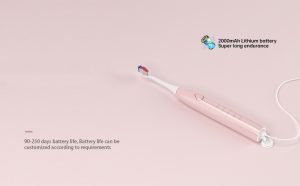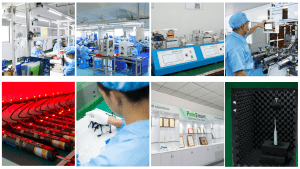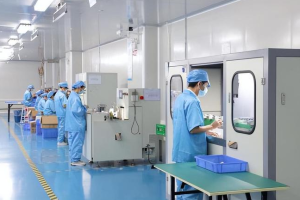Have you ever stopped to wonder how much it costs to manufacture a electric toothbrush?
We use this essential tool every day without giving much thought to its production process and the various factors that influence its cost.
In this blog post, we will delve into the world of electric toothbrush manufacturing and explore the different elements that contribute to its overall expenses.
From the cost of raw materials to distribution and marketing expenses, we will uncover the intricacies of this seemingly simple yet vital product.
Powsmart offers a range of customized electric toothbrushes for private labeling.
Factors affecting electric toothbrush manufacturing costs
When it comes to manufacturing electric toothbrushes, several key factors come into play, impacting the overall cost.
These factors include the cost of raw materials, labor, machinery and equipment, distribution and transportation, marketing and advertising, research and development, as well as profit margins and pricing.
Let’s explore each of these elements in detail to gain a comprehensive understanding of their influence.
Powsmart private label electric toothbrushes are designed to meet the specific needs and preferences of our clients.
Cost of raw materials
The cost of raw materials is a significant component in electric toothbrush manufacturing.
Electric toothbrushes are typically composed of a combination of plastic and bristles.
The price of plastic can vary depending on factors such as type, quality, and quantity required. Similarly, the cost of bristles can vary based on the material used, such as nylon or natural fibers.
Additionally, other materials like rubber grips or ergonomic handles may also contribute to the overall cost.
Cost of labor
Labor costs play a crucial role in determining the overall expense of electric toothbrush manufacturing.
Skilled workers are required for various stages of the production process, including molding, assembly, quality control, and packaging.
The cost of labor can vary significantly depending on the location of the manufacturing facility, prevailing wages, and the level of automation employed in the production process.
Cost of machinery and equipment
Electric toothbrush manufacturing involves the use of specialized machinery and equipment. These include injection molding machines for producing the brush handles, bristle tufting machines, and packaging equipment.
cost of purchasing and maintaining these machines adds to the overall manufacturing expenses.
Additionally, investments in technology and automation can further impact the cost, as they can streamline the production process and increase efficiency.
Distribution and transportation costs
Once the electric toothbrushes are manufactured, they need to be distributed to retailers or directly to consumers.
The cost of transporting the electric toothbrushes from the manufacturing facility to various distribution centers or retail stores can significantly contribute to the overall expenses.
Factors such as distance, shipping method, and logistics play a role in determining these costs.
Marketing and advertising expenses
Electric toothbrush manufacturers invest a significant amount in marketing and advertising to promote their products.
This includes activities such as designing packaging, creating advertisements, sponsoring events, and conducting market research.
These expenses are essential for building brand awareness, attracting customers, and maintaining a competitive edge in the market. Marketing and advertising costs can vary depending on the scale and reach of the campaign.
Research and development costs
The electric toothbrush industry is constantly evolving, with manufacturers striving to develop innovative products that meet consumer demands. Research and development (R&D) costs are incurred in creating new toothbrush designs, improving existing features, and exploring new materials.
These expenses cover research activities, prototype development, testing, and obtaining necessary certifications. R&D costs are essential for staying ahead of the competition and meeting the evolving needs of consumers.
Profit margins and pricing
Profit margins and pricing are crucial considerations for electric toothbrush manufacturers.
While the cost of manufacturing and other associated expenses determine the minimum price that needs to be set, profit margins allow companies to generate revenue and sustain their operations.
The profit margin can vary depending on factors such as brand positioning, market demand, competition, and production volume.
Manufacturers must strike a balance between setting a competitive price that attracts customers while ensuring profitability.
By analyzing the various factors affecting electric toothbrush manufacturing costs, it becomes clear that producing this seemingly simple product involves a complex web of considerations.
From the cost of raw materials and labor to machinery, distribution, marketing, research, and development, each element contributes to the final expense.
Understanding these factors not only provides insights into the electric toothbrush manufacturing industry but also highlights the value of this essential tool we often take for granted.
Conclusion
Next time you pick up your electric toothbrush, take a moment to appreciate the intricate process involved in its production.
The cost of manufacturing a electric toothbrush is influenced by various factors, including raw materials, labor, machinery, distribution, marketing, research, and development, as well as profit margins and pricing.
Each of these elements plays a significant role in determining the overall expenses associated with this everyday item.
By understanding the complexities behind electric toothbrush manufacturing costs, we can gain a newfound appreciation for the value and importance of this small yet indispensable tool.
If you are looking for a reliable partner to manufacture electric toothbrushes, look no further.
Contact us today to discuss your needs and let us help you bring your vision to life.





